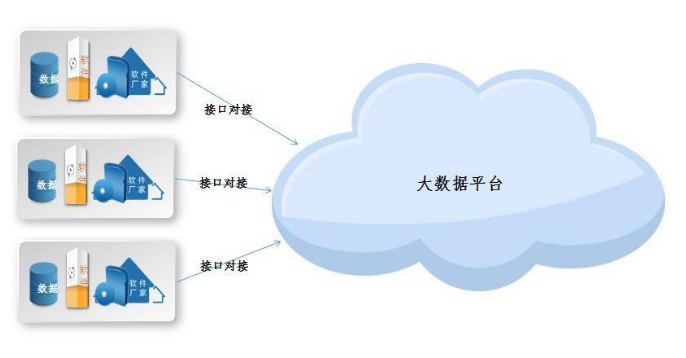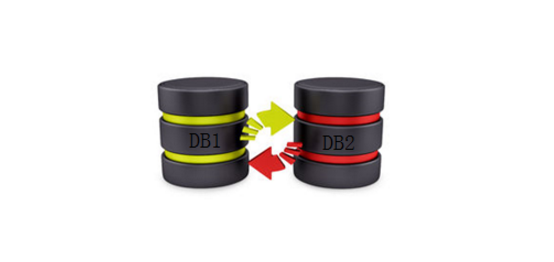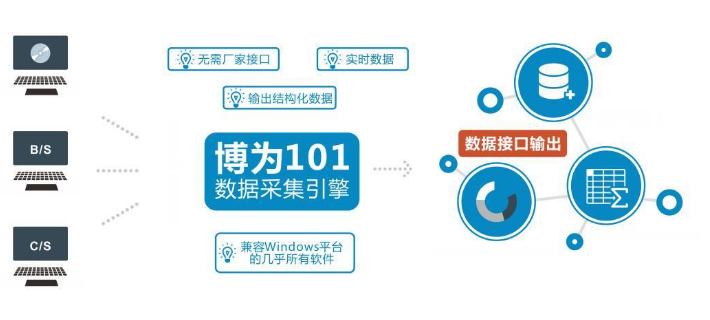Data acquisition (DAQ) refers to the automatic collection of non-electricity or power signals from analog and digital units under test, such as sensors and other devices under test, and sent to the host computer for analysis and processing. The data acquisition system is a flexible, user-defined measurement system that combines measurement software and hardware products based on a computer or other dedicated test platform. Data acquisition, also known as data acquisition, uses a device that collects data from outside the system and inputs it to an interface inside the system. Data acquisition technology is widely used in various fields. For example, the camera and the microphone are all data acquisition tools. The collected data is various physical quantities that have been converted into electrical signals, such as temperature, water level, wind speed, pressure, etc., and may be analog or digital. Acquisition is generally a sampling method, that is, repeated acquisition of the same point data at a certain time (called sampling period). The collected data is mostly an instantaneous value, or it is a characteristic value for a certain period of time. Accurate data measurement is the basis of data collection. Data measurement methods are contact and non-contact, and the detection components are various. Regardless of the method and components, the premise of not affecting the state of the object under test and the measurement environment is to ensure the correctness of the data. Data collection has a wide range of meanings, including the collection of continuous physical quantities of the surface. In computer-aided drafting, mapping, and design, the process of digitizing graphics or images can also be referred to as data acquisition. At this time, geometric quantities (or physical quantities such as gray scales) are collected. Today, with the rapid development of the Internet industry, data collection has been widely used in the Internet and distributed fields, and important changes have taken place in the field of data collection. First of all, the intelligent data acquisition system in distributed control applications has made great progress at home and abroad. Second, the number of bus-compatible data acquisition plug-ins continues to increase, and the number of data acquisition systems that are compatible with personal computers is increasing. Various data acquisition machines at home and abroad have been published, bringing data collection to a new era. Now talking about big data is no new idea, all kinds of products, platforms and companies are full of big data tags, but big data has not set off the expected hurricane, and even was labeled as "pseudo-proposition" stigma. Inverted, data collection is the cornerstone of the big data industry. They are all talking about big data applications and big data value mining, but they don't want to, there is no data to apply, value. It is like not mining oil, just want to get gasoline. Of course, oil exploitation is not easy. The information construction of various industries, including government departments, is closed. Massive data is sealed in different software systems. The data sources are diverse, and the data volume is large and updated quickly. The most important thing in the era of big data is data. But in the face of data resources, how to mine? What tools are used to mine? How to mine at the lowest cost? Today, we will discuss the data collection methods of three kinds of software systems, focusing on the implementation process and their respective advantages and disadvantages. First, the software interface Various software vendors provide data interfaces to achieve data collection and aggregation. Implementation process: · Coordinate the presence of multi-party software vendor engineers to understand all system business processes and database-related table structure design, detailing and determining feasibility plans; · Encoding · Testing and debugging phase · Delivery The data reliability and value of the interface docking mode are relatively high. Generally, there is no data duplication; the data is transmitted in real time through the interface to meet the real-time requirements of the data. The disadvantage of interface docking is the high cost of interface development; coordination of various software vendors, coordination is difficult, investment is large; scalability is not high, such as: due to business needs each software system to develop new business modules, and big data platform The data interface between the two needs to be modified and changed accordingly. It is even necessary to overturn all previous data interface codes, which is heavy and time consuming. Second, the open database method To achieve data collection and aggregation, open database is the most direct way. The two systems have their own databases, which are convenient between databases of the same type: 1. If the two databases are on the same server, as long as there is no problem with the user name setting, you can directly access each other. You need to bring the database name and the schema owner of the table after the from. Select * from DATABASE1.dbo.table1 2. If the databases of the two systems are not on one server, it is recommended to use the form of a linked server, or use openset and opendatasource. This requires the configuration of the peripheral server for database access. The connection between different types of databases is more troublesome, and it takes a lot of settings to take effect. It will not be explained in detail here. The open database method can directly obtain the required data from the target database, and the accuracy is high, and the real-time performance can be guaranteed, which is the most direct and convenient way. However, the open database approach also needs to coordinate the open database of each software vendor, which is difficult; if a platform connects multiple software vendors' databases at the same time and obtains data in real time, this is also a huge challenge to the platform performance. However, for security reasons, software vendors generally do not open their own databases. Third, the direct data collection method based on the underlying data exchange By acquiring the underlying data exchange of the software system, the network traffic package between the software client and the database, collecting all the data generated by the target software based on the underlying IO request and network analysis technologies, converting and re-structuring the data, and outputting to the new Database for the software system to call. The technical features are as follows: 1. No need for the original software manufacturer to cooperate; 2. Real-time data collection, data end-to-end response speed up to second level; 3. Strong compatibility, can collect various software system data of the Windows platform; 4. Export structured data as the basis for data mining and big data analytics applications; 5. Automatically establish data association, short implementation period, simple and efficient; 6. Support automatic import of historical data, automatically write data to target software through I/O artificial intelligence; 7. Simple configuration and short implementation period. Based on the direct data collection method of the underlying data exchange, get rid of the dependence on software vendors, do not need software vendors to cooperate, not only need to invest a lot of time, energy and funds, do not worry about system development team disintegration, source code loss and other reasons lead to system data collection Into the dead. Directly extract data from a variety of software systems, continuously obtain accurate and real-time data, automatically establish data association, and output structured data with extremely high utilization rate, so that data sources of different systems are orderly, safe and controllable. Linked circulation, providing decision support, improving operational efficiency, and generating economic value. AL/CU Universal Terminal Block Cable Terminal Block,Universal Terminal Block,Waterproof Terminal Block,Low Voltage Terminal Block ZHEJIANG QIANNA ELECTRIC CO.,LTD , https://www.traner-elec.com


What are the data collection methods?
data collection